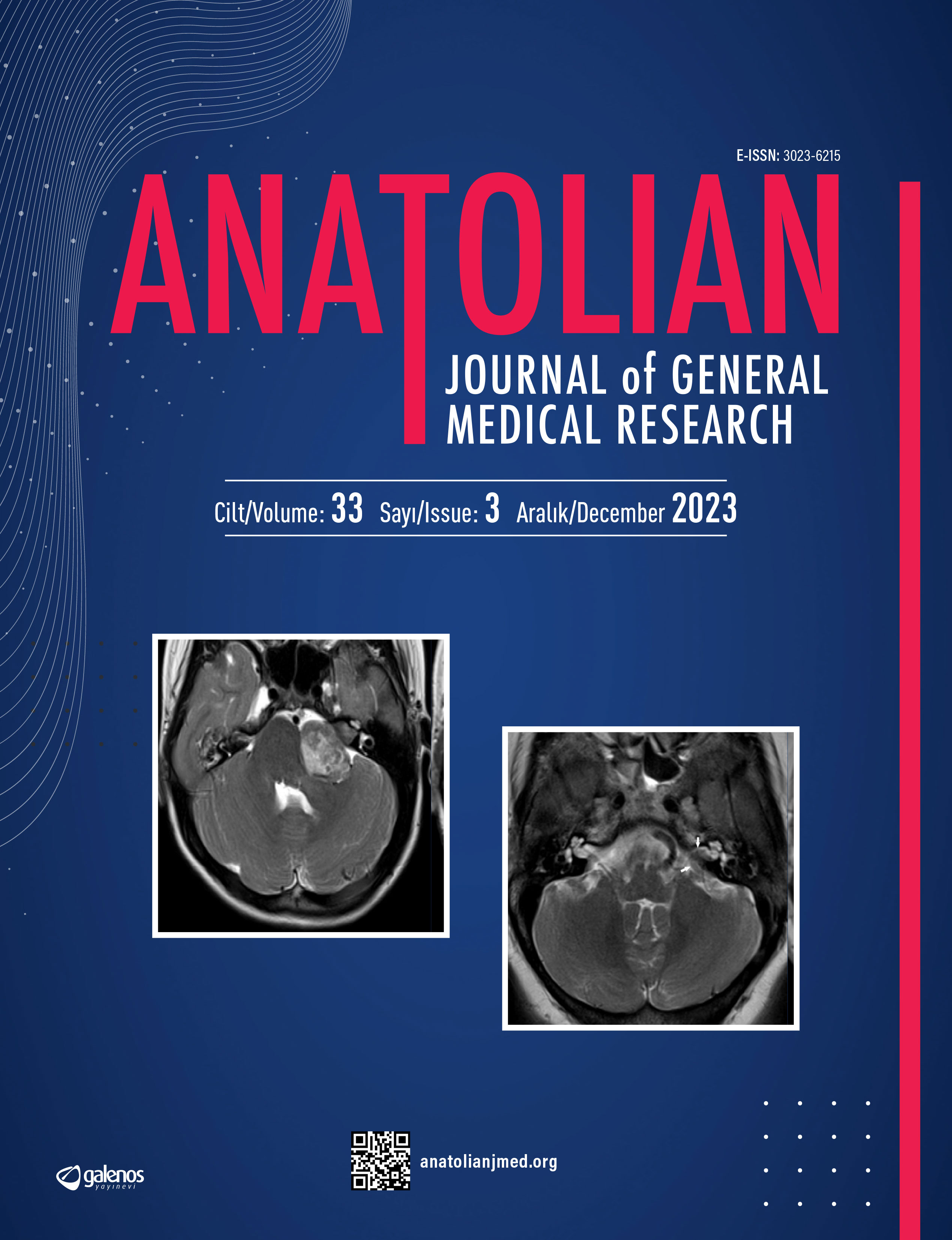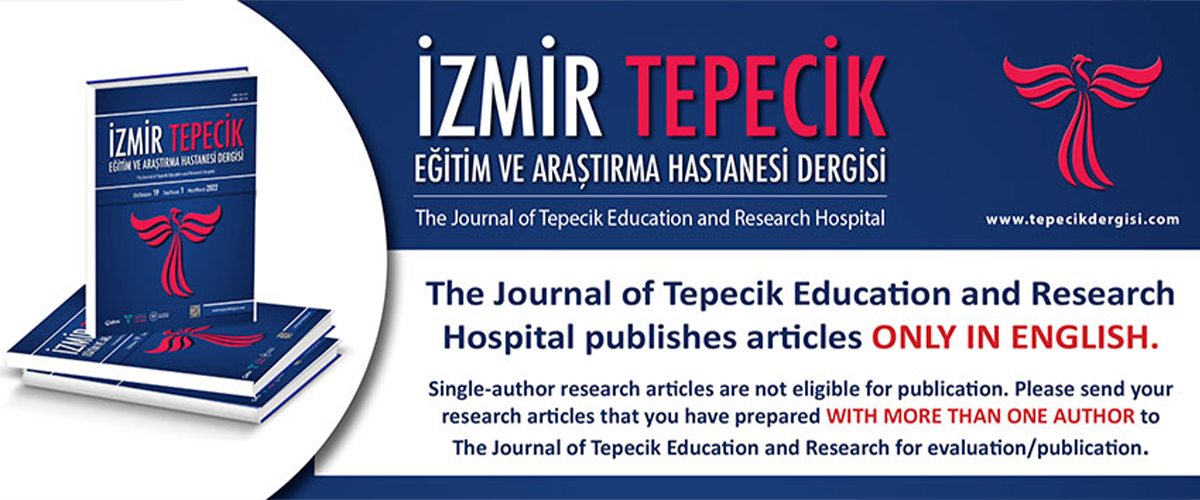








The association of obesity and sarcopenia in older adults: Sarcopenic Obesity
Süleyman Emre Koçyiğit1, Esra Ateş Bulut2, Ali Ekrem Aydın3, Ahmet Turan Işık41Department Of Geriatric Medicine, Tepecik Training And Research Hospital, Izmir, Turkey2Department Of Geriatric Medicine, Adana City Training And Research Hospital, Adana, Turkey
3Department Of Geriatric Medicine, Sivas Numune State Hospital, Sivas, Turkey
4Unit For Aging Brain And Dementia, Department Of Geriatric Medicine, Faculty Of Medicine, Dokuz Eylul University, Izmir, Turkey
INTRODUCTION: Sarcopenia is associated with recurrent falls, limited mobilization, depression, increased risk of morbidity and mortality in geriatric patients. It has been reported that the risk of frailty and disability increases more when obesity and sarcopenia coexist. The aim of this study is to investigate the relationship between obesity and sarcopenic obesity with functionality and geriatric syndromes in geriatric patients.
METHODS: A total of 432 patients underwent a comprehensive geriatric assessment and whose file records were reached were included in the study. Skeletal muscle mass obtained by bioimpedance analysis, walking speed with a 4-meter walking test, and muscle strength measurements with a hand dynamometer were recorded in all patients. The diagnosis of sarcopenia was made according to the criteria of the European Working Group on Sarcopenia in Older People. In addition, patients with a body mass index> 30 kg / m2 were considered obese and divided into two groups as sarcopenic obesity and non-sarcopenic obesity.
RESULTS: 69.9% of the patients were women, the mean age of them was calculated as 75.40±7.35. 20.4% of all participants were sarcopenic obesity(n = 88), 22.5% were non-sarcopenic obesity(n = 97) and the rest were from the control group without sarcopenia and obesity (n = 246). It was determined that age was higher and hypertension was more common in sarcopenic obese patients. It was observed that falls and urinary incontinence were more common in obese patients(p <0.05). Cognitive test scores, gait and balance scores, activities of daily living and nutritional scores were found to be worse in the sarcopenic obesity group compared to the other two groups (p <0.05).
DISCUSSION AND CONCLUSION: The association of sarcopenia and obesity in elderly patients is associated with poorer functionality and cognitive functions in patients. Therefore, obese cases should be evaluated in terms of sarcopenia and necessary interventions should be made in the early period.
Yaşlı olgularda obezite ile sarkopeni birlikteliği: Sarkopenik Obezite
Süleyman Emre Koçyiğit1, Esra Ateş Bulut2, Ali Ekrem Aydın3, Ahmet Turan Işık41Tepecik Eğitim Ve Araştırma Hastanesi Geriatri Bölümü, İzmir, Türkiye2Adana Şehir Hastanesi Geriatri Bölümü, Adana, Türkiye
3Sivas Numune Hastanesi Geriatri Bölümü, Sivas, Türkiye
4Dokuz Eylül Üniversitesi Tıp Fakültesi Yaşlanan Beyin Ve Demans Ünitesi Geriatri Bilim Dalı, İzmir, Türkiye
GİRİŞ ve AMAÇ: Sarkopeni geriatrik olgularda tekrarlayan düşmeler, mobilizasyon kısıtlılığı, depresyon, morbidite ve mortalite riskinde artış ile ilişkilidir. Obezite ile sarkopeni birlikteliğinde kırılganlık ve dizabilite riskinin daha fazla arttığı bildirilmektedir. Bu çalışmanın amacı, geriatrik olgularda obezite ve sarkopenik obezitenin fonksiyonellik, geriatrik sendromlarla ilişkisinin araştırılmasıdır.
YÖNTEM ve GEREÇLER: Geriatri kliniğine başvuran ve kapsamlı geriatrik değerlendirme yapılmış, dosya kayıtlarına ulaşılan toplam 432 hasta çalışmaya dahil edildi. Tüm hastaların biyoimpedans analizi ile elde edilen iskelet kas kütlesi, 4 metre yürüme testi ile yürüme hızları, el dinamometresi ile kas gücü ölçümleri kaydedildi. Sarkopeni tanısı Geriatrik Olgularda Avrupa Sarkopeni Çalışma Grubu kriterlerine göre konuldu. Ayrıca vücut kitle indeksi >30 kg/m2 olan hastalar obez kabul edilerek, sarkopenik obezite ve non-sarkopenik obezite şeklinde iki gruba ayrıldı.
BULGULAR: Hastaların %69,9’u kadındı, ortalama yaş 75,40±7,35 olarak hesaplandı. Bütün katılımcıların %20,4’ü sarkopenik obezite (n=88), %22,5’i non-sarkopenik obezite (n=97) ve geri kalanı sarkopeni ve obezitesi olmayan kontrol grubundan (n=246) oluşmaktaydı. Sarkopenik obez hastalarda yaşın daha yüksek ve hipertansiyonun daha sık olduğu belirlendi. Obez hastalarda düşme ve üriner inkontinansın daha sık olduğu görüldü (p<0,05). Kognitif test skorları, denge ve yürüme skorları, günlük yaşam aktiviteleri ve nutrisyonel skorlar sarkopenik obezite grubunda diğer iki gruba göre daha kötü olarak tespit edildi (p<0,05)
TARTIŞMA ve SONUÇ: Yaşlı olgularda sarkopeni ve obezite birlikteliği hastalarda daha kötü fonksiyonellik ve kognitif fonksiyonlarla ilişkilidir. Bu nedenle, obez olgular sarkopeni açısından değerlendirilmeli ve gerekli müdahaleler erken dönemde yapılmalıdır.
Corresponding Author: Ahmet Turan Işık, Türkiye
Manuscript Language: Turkish
(943 downloaded)




